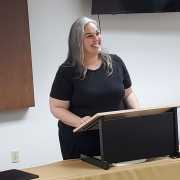
The following is from my Substack article, “The Power of the Pause Gregorian Chant, Leisure, and the Joy of Going Slow“:
I am Eastern Orthodox, and I came into the church through the Byzantine tradition of Orthodox Christianity. The term “Byzantine” comes from the name of the ancient city of Byzantion (later renamed “Constantinople”), from which the eastern portion of the Roman Empire derived its name, “The Byzantine Empire.” But Byzantine has also come to be synonymous for things that are complex and intricately detailed, as when we say, “the Paris sewer system is one of Byzantine complexity.” Byzantine Christian worship joins both these senses: it retains the Christian liturgical practices of the Byzantine empire but also enjoys a complexity that is, well, Byzantine.
When I first started attending Byzantine worship, I was struck by the detailed visual and auditory stimuli. Many churches have icons covering every square inch of the wall and strive to have sound happening during every part of the service. It’s a sensory feast of Christ-centered busyness, rich in decorative detail and embellishment.
I had a very different experience on St. Patrick’s Day 2023 when I visited St. Patrick’s Orthodox Church in Bealeton Virginia for the first time. To celebrate their patronal feast day, the church had a Vespers and a Solemn High Mass. Though the church is Orthodox, they followed the Roman rite instead of the Byzantine. One of the things that struck me is that during the services for Vespers when Psalms are chanted in the Gregorian style, a notable caesura or pause occurs between each line of verse, adding a layer of stillness to the prayers.
The same stillness is evident in the church décor at St. Patrick’s. Designed in the more gothic style of English churches, the church interior reflected an aesthetic of simplicity, with only four icons in front and with the side walls containing only the Stations of the Cross. The interior design, like the silent pauses, was unnerving but beautiful.
We tend to think of pause as intermediating between one activity and the next, as a means for reaching what will follow. Similarly, our words for unfilled space on a wall, such as “gap” or “emptiness” suggest something that hasn’t yet been filled, a potency waiting to be actualized. But what if stillness is not a means but an end? What if silence is not an absence but a fullness?


